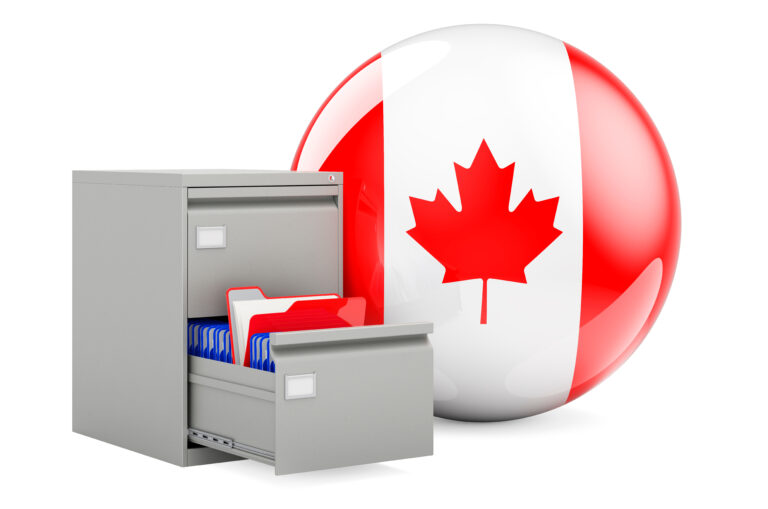Canada’s Fall Economic Statement set aside $1.6 billion over six years and $315 million a year after that to deliver its ambitious 2023 to 2025 Immigration Levels Plan.
The federal government’s Fall Economic Statement also allocated $50 million this year and next year specifically aimed at tackling a crippling processing backlog.
Finance Minister Chrystia Freeland outlined the spending in her budget announcement on Thursday.
Read More Canada Immigration News
Canada To Increase Immigration to 500,000 Per Year By 2025
Quebec Says It Can Only Take 50,000 Immigrants Despite Huge Rise In Canada’s Intake
Poll Reveals Canadians Overwhelmingly Support Record-Breaking Immigration
It comes after Immigration Minister Sean Fraser tabled the latest Immigration Levels Plan earlier this week, which will see Canada welcome 1.45 million immigrants in the next three years.
Annual levels will grow to 500,000 by 2025, dominated by the Economic Class.
“Today’s Fall Economic Statement is focused on building an economy that works for everyone – an economy that creates good jobs and makes life more affordable for Canadians,” Freeland said.
“Even as we face global headwinds, the investments we are making today will make Canada more sustainable and more prosperous for generations to come.”
The Fall Economic Statement itself outlined exactly how important immigration has become to Canada’s economy, with a new record of more than 430,000 newcomers expected to be welcomed this year.
“Immigration is core to our identity as Canadians, while also being a key driver of Canada’s economic growth,” the statement said.
Watch Video
Immigrants arriving over the next three years “will help to address persistent labour shortages, including in healthcare, manufacturing, and the building trades”, said the statement.
“This builds on steps the government has already taken to respond to Canada’s labour market needs as part of the Express Entry system,” it said.
“At the same time, the government will continue to invest in the processing capacity to ensure that all applications are processed as quickly as possible and to eliminate backlogs.”
The immigration increases announced by Fraser include 301,250 new immigrants in the Economic Class alone, as Canada continues its commitment to help businesses beset with chronic labour shortages.
Immigration accounts for almost 100 per cent of Canada’s labour force growth, and, by 2032, it is projected to account for 100 per cent of Canada’s population growth, Immigration, Refugees and Citizenship Canada says.
Canada’s 2023 to 2025 Immigration Levels Plan
| 2023 | 2024 | 2025 | ||
| Overall Planned Permanent Resident Admissions | 465,000 | 485,000 | 500,000 | |
| Economic | Federal High Skilled | 82,880 | 109,020 | 114,000 |
| Federal Economic Public Policies | 25,000 | – | – | |
| Federal Business | 3,500 | 5,000 | 6,000 | |
| Economic Pilots: Caregivers; Agri-Food Pilot; Rural and Northern Immigration Pilot; Economic Mobility Pathways Project | 8,500 | 12,125 | 14,750 | |
| Atlantic Immigration Program | 8,500 | 11,500 | 14,500 | |
| Provincial Nominee Program | 105,500 | 110,000 | 117,500 | |
| Quebec Skilled Workers and BusinessFootnote6 | See the Quebec immigration plan | To be determined | To be determined | |
| Total Economic | 266,210 | 281,135 | 301,250 | |
| Family | Spouses, Partners and Children | 78,000 | 80,000 | 82,000 |
| Parents and Grandparents | 28,500 | 34,000 | 36,000 | |
| Total Family | 106,500 | 114,000 | 118,000 | |
| Refugees and Protected Persons | Protected Persons in Canada and Dependents Abroad | 25,000 | 27,000 | 29,000 |
| Resettled Refugees – Government-AssistedFootnote7 | 23,550 | 21,115 | 15,250 | |
| Resettled Refugees – Privately Sponsored | 27,505 | 27,750 | 28,250 | |
| Resettled Refugees – Blended Visa Office-Referred | 250 | 250 | 250 | |
| Total Refugees and Protected Persons | 76,305 | 76,115 | 72,750 | |
| Humanitarian and Other | Total Humanitarian & Compassionate and Other | 15,985 | 13,750 | 8,000 |
Economic Class
The Provincial Nominee Program and Federal High Skilled categories will dominate the Economic Class newcomers.
PNP newcomers will account for 105,000 new permanent residents in 2023, 110,000 in 2024 and 117,500 in 2025.
Canada will also welcome 82,880, 109,020 and 114,000 in 2023, 2024 and 2025 respectively through the Federal High Skilled stream, mainly managed by Express Entry.
The stream includes newcomers through the Federal Skilled Worker, Federal Skilled Trades and Canadian Experience Class programs.
The Atlantic Immigration Program will also grow to 14,500 newcomers by 2025, and other economic pilots to 14,750.
Family Class
Canada’s Family Class category will grow to 106,500 in 2023, then 114,000 in 2024 and 118,000 by 2025.
Most family sponsorship newcomers will be spouses, partners and children, growing to 82,000 by 2025. However, there will also be room for a record number of parents and grandparents, at 36,000 by 2025.
Refugees
Canada will continue to welcome large numbers of refugees, including 76,305 in 2023, 76,115 in 2024 and 72,750 in 2025.
More Highlights of the 2023 to 2025 Immigration Levels Plan
- a long-term focus on economic growth, with just over 60% of admissions in the economic class by 2025.
- using new features in the Express Entry system to welcome newcomers with the required skills and qualifications in sectors facing acute labour shortages such as health care, manufacturing, building trades and STEM (Science, Technology, Engineering and Math).
- increases in regional programs to address targeted local labour market needs, through the Provincial Nominee Program, the Atlantic Immigration Program, and the Rural and Northern Immigration Pilot.
- reuniting more families faster.
- ensuring that at least 4.4% of new permanent residents outside Quebec are Francophone.
- support for global crises by providing a safe haven to those facing persecution, including by expanding the Economic Mobility Pathways Pilot.



